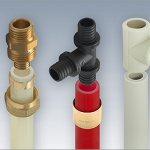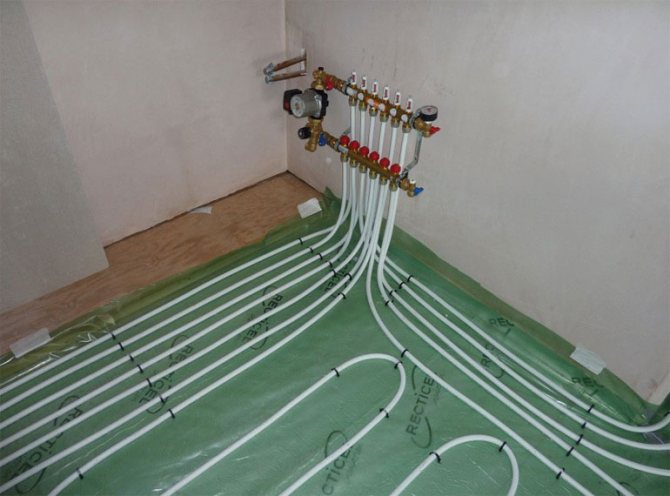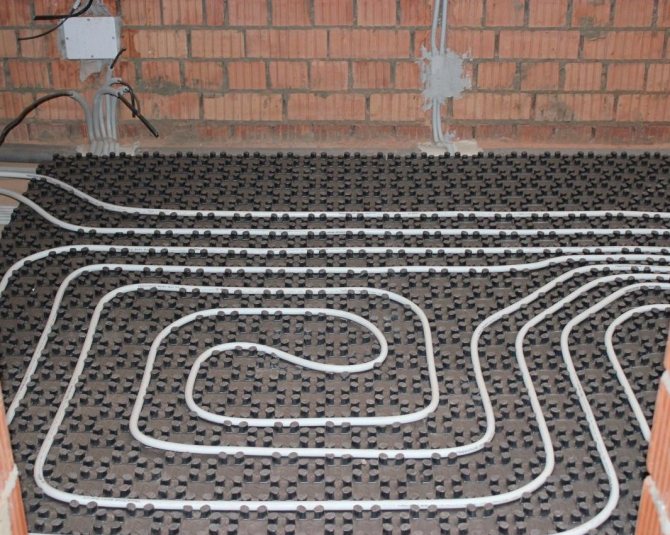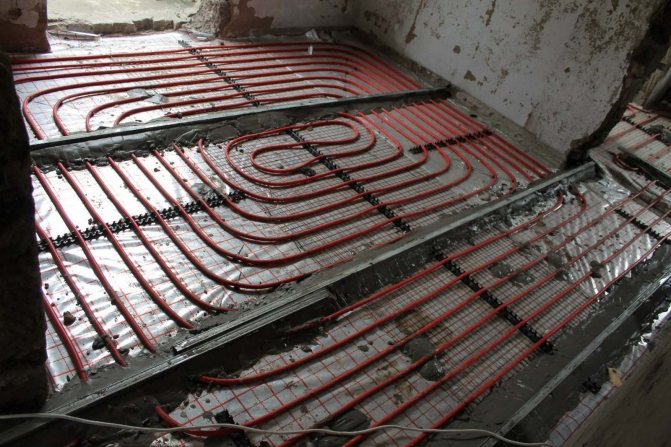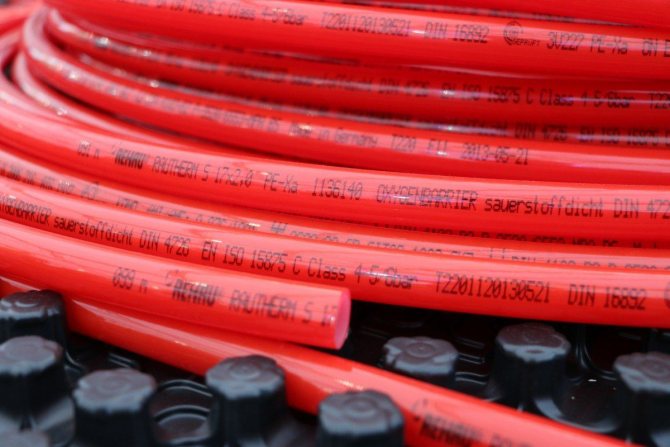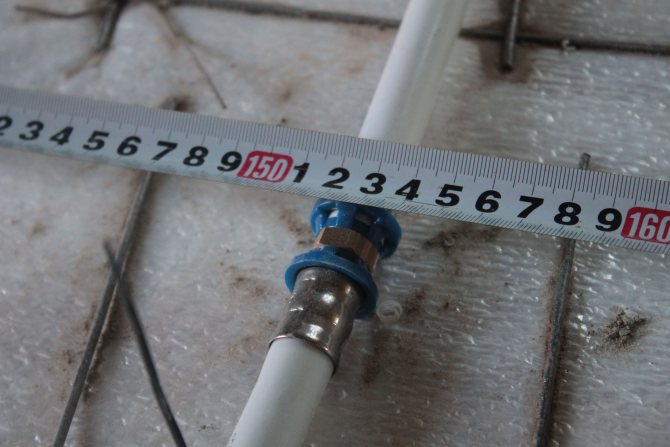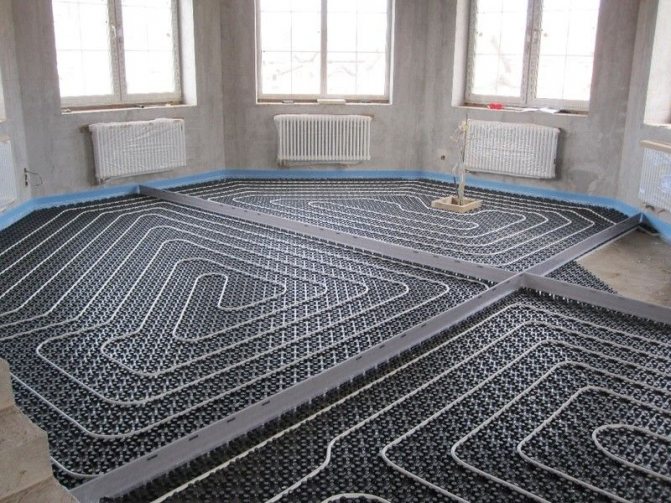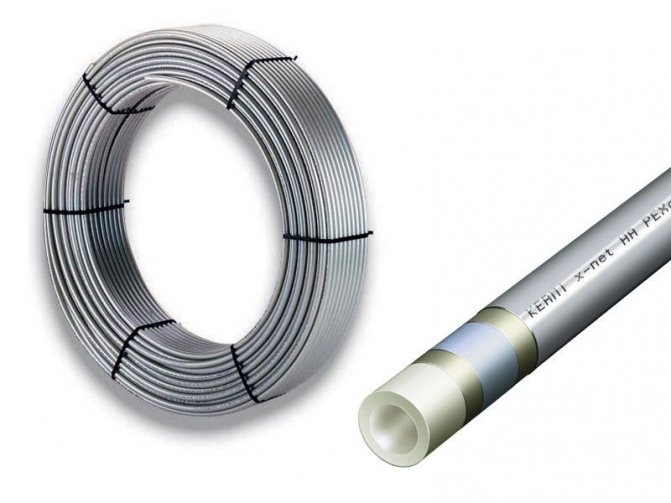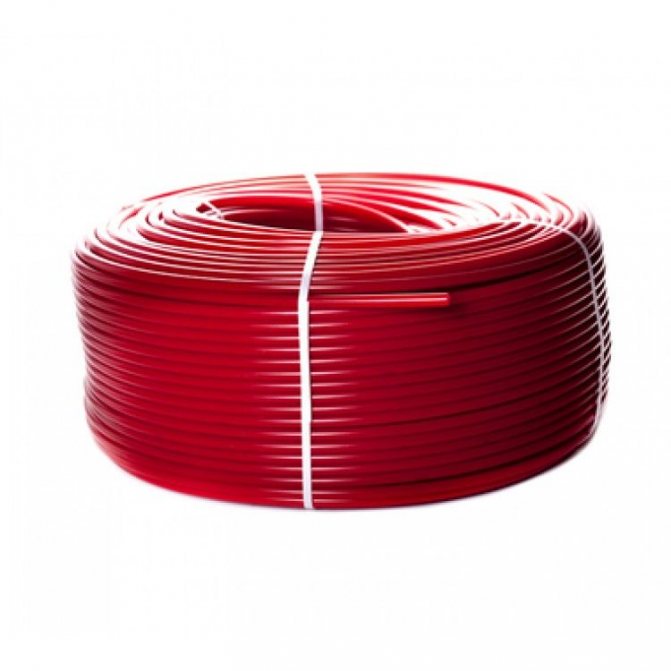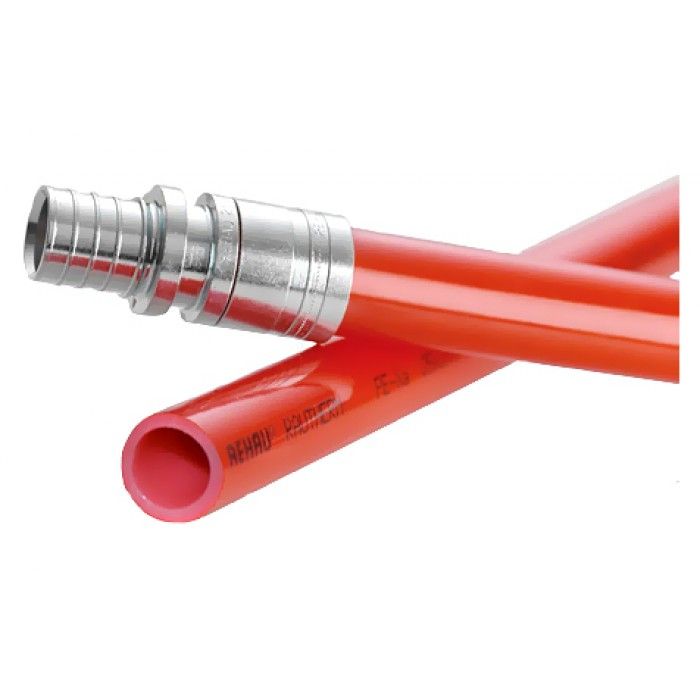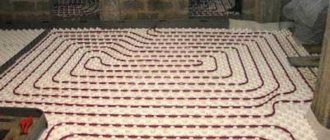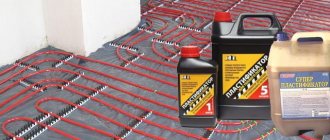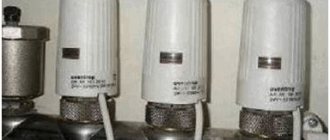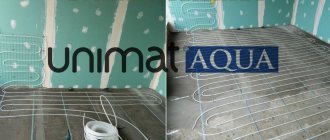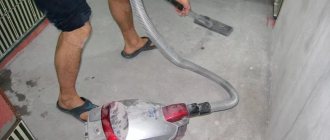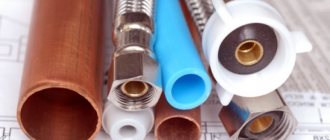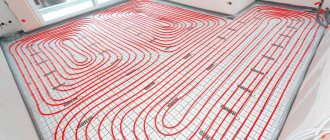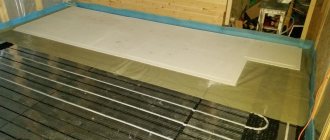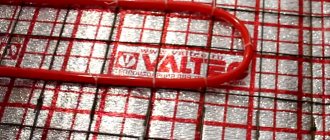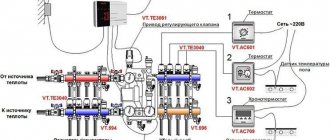Let's dig into the holy of holies and find out which plastic pipes are better: polypropylene, metal-plastic or cross-linked polyethylene. And it doesn't matter where they will be used - in water supply or heating. And each type has both advantages and obvious disadvantages. Well, let's get started
To choose the material for the plumbing correctly, you need to determine the conditions in which it will be used. Options may be as follows: 1. For cold and hot water in an apartment, private house 2. for oil, steam and gas heating 3. sewerage 4. basement wiring for a multi-storey building 5. heating mains
The technical operating conditions will differ, and these are: temperature, pressure inside the system, mechanical load. Therefore, the plastic will be slightly different.
An opinion was formed that plastic came to us from Europe, they say the Germans and Italians received patents, established successful production and sold the franchise first to Turkey, and then to Russia. But wise old plumbers remember that cross-linked polyethylene was produced back in the USSR at the Karaganda plastic plant in 1972.
Now water flows through plastic in the entire civilized world, and this is considered the most convenient.
There are 3 main types of plastic pipes, the rest are their subspecies. Consider which pipes are better and where it is better to install.
Criterias of choice
When choosing a material for the construction of communications, the decisive argument should not be considerations of economic benefits or the complexity of installation, but the compliance of the technical characteristics of the pipes with the expected operating conditions.
In the case of underfloor heating, the following requirements are imposed on pipe materials:
- Strength... According to the official requirements for pipes for underfloor heating, it is forbidden to use ferrous metal and seam pipes. Steel products without special anti-corrosion protection in a walled state will not last long. The joint is a "weak" point when the hydraulic pressure in the heating system increases. The use of such materials will lead to a rapid occurrence of an emergency, the elimination of which will require opening the concrete screed.
- Chemical inertness... For long-term operation without reducing the internal clearance, pipes with a perfectly smooth inner wall are required. The coolant contains salts of alkaline earth metals, which during long-term operation are deposited on the inner walls of most pipe materials.
- Resistance to mechanical stress without deformation... The minimum concrete screed exerts a pressure on the pipes equal to 10 kg of weight per sq. see Soft plastic pipes under this load will deform, and too hard plastic may burst.
- Resistance to high temperature and pressure of the medium in the heating system... The minimum required stability parameters are 95 degrees and 10 atm. respectively.
- High level of heat transfer... For efficient heating, it is important that communications are not a barrier between the coolant and the air.
- Lack of connections under the screed... Requires pipe materials that can be laid in one piece up to 120 m in length.
- Flexibility and resistance to fracture... When laying underfloor heating, it is important that the pipes are elastic enough to bend without damaging the walls and deforming the inner section at a minimum radius. Large pipe spacing causes cold segments.
We recommend that you familiarize yourself with: Hood for a gas boiler and the rules for its installation in a private house
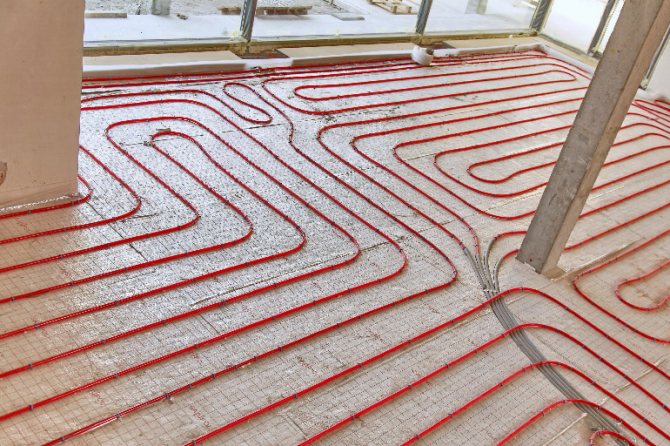
The choice of this or that material is also influenced by the type of heating in the house. If this is a central system, then the warm floor will be subjected to more serious loads than with an individual circuit.
Note! Those looking for the ideal floor heating device should consider using copper materials. Copper has a significantly greater margin of safety than is necessary in this case. There are two drawbacks - complicated installation and high price of copper pipes.
Reinforced plastic and cross-linked polyethylene are very close in terms of their technical and price characteristics. Comparison of their positive and negative sides will allow you to make the right choice in each case.
Evaluation Criteria for Pipe Materials
I will list the main points of the operation of the water pipeline for floor heating. Taken into account:
- Heating temperature. It fluctuates in the range of 30 ... 55 ° С.
- Constant pressure in the circuit. It will be 1.5-2 bar, when testing the system, a pressure of 6 bar is used.
- The pipeline is most often located in a screed, where it is subjected to pressure from the pressure of water and concrete.
Thus, the most important parameters of pipes for underfloor heating:
- Working temperature 30 ... 55 ° С.
- Pressure up to 6 bar.
- Sufficient thermal conductivity.
Also important are protection against oxygen penetration into the channel, thermal expansion rates, corrosion resistance, ease of installation.
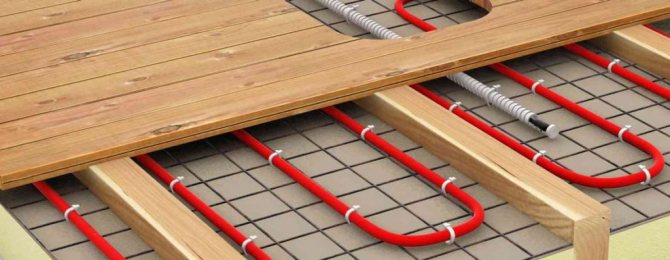

Polyethylene pipes
Cross-linked polyethylene is a modern high-tech chemical product. Crosslinking of the polymer occurs at the molecular level. Conventional polyethylene is a long, linear chain of molecules. Modern technologies allow chemists to bind these molecules together with strong additional chemical bonds. Just as a strong fabric is formed from threads, a three-dimensional web of cross-linked polyethylene is formed from linear molecules.
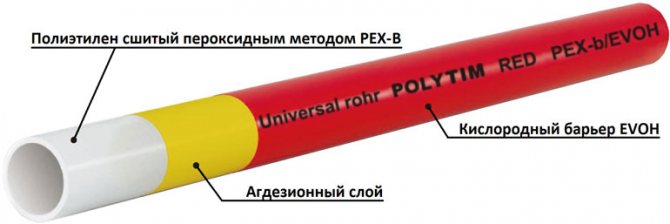

There are several technologies for the production of cross-linked polyethylene. They differ in their cost, the percentage of connected linear molecules at the exit and marking. For underfloor heating, pipes with a crosslinking percentage of at least 65% are required.
PEX-a pipes have up to 85% crosslinked molecules. The manufacturing process is quite expensive, but guarantees high quality material. The technology for the production of PEX-b pipes is cheaper, but the output gives only 65% of connected molecules.
Note! Pipes marked PEX-c for floor insulation are not reliable enough.
The best properties of polyethylene pipes:
- High elasticity - allows you to lay pipes as close to each other as possible without damage.
- Small coefficient of expansion. XLPE does not “walk” under concrete when the temperature changes. Resistance to mechanical influences from outside and outside. The material does not deform under the concrete screed and does not burst when freezing with water.
- The ability to return to its original form. This guarantees tightness when using fittings and does not deform in bending.
- Inert to chemical and biological influences. Pipes do not rot and are not destroyed by an aggressive environment.
- Compliance with the technical characteristics of the material to the operating conditions. Cross-linked polyethylene can withstand water heating up to 90 degrees (recommended temperature 80) and pressure up to 8 atm.
We recommend that you familiarize yourself with: Features of the use of a polyethylene pipe in gas mains
There are few disadvantages of cross-linked polyethylene and they are associated with installation. The high elasticity of the material in bending requires the pipelayers to rigidly fix the pipes during installation. The second point is the need to preserve the external protective coating. This complicates the work somewhat in comparison with metal-plastic.
Reviews and cost
Considering the reviews on polyethylene pipes, we can say that most of them are positive.The owners who have already tried this material note its long service life and reliability. The most important thing is to do the installation correctly. And then the warm floor made of polypropylene will last for many years and will create a comfortable and warm atmosphere in the house. In principle, the installation is not particularly difficult.
It is worth noting that the price of cross-linked polyethylene for underfloor heating due to simple installation is more profitable than metal-plastic structures by 30%.
The cost of polyethylene pipes does not depend on the brand. So the products of popular manufacturers are in the same price range. However, when buying, you should pay attention to the price of pipe fittings. Since the difference in price here can be significant. And this will greatly affect the final cost of installing the heating system.
Some owners, in order to save money, are trying to equip a warm floor from polypropylene pipes with their own hands, and they quite succeed. After all, you also have to pay for installation services, and a lot. And by doing the work yourself, the savings will be tangible.
Reinforced plastic tubular products for floor insulation
Reinforced-plastic pipes were originally designed for the construction of closed floor insulation systems. These materials have a complex, multi-layer structure, where aluminum foil is the supporting element. The addition of metal to XLPE eliminates its disadvantages, but adds its own characteristics that should be taken into account during installation.
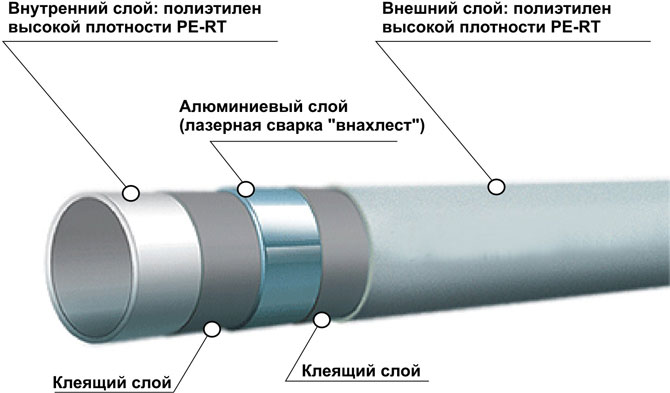

To understand how a reinforced plastic pipe works, you need to understand its structure. The material is a "sandwich" of two layers of polyethylene, interlaced with metal. The bonding agent is a special glue that is applied to the metal foil on both sides.
Aluminum inclusion adds metal-plastic to all the advantages of polyethylene pipes:
- resistance to water hammer;
- higher operating parameters - pressure up to 10 atm, temperature up to 95-100 degrees (recommended 93);
- faster and more efficient heating of the room;
- the ability to maintain the shape of a bend without fixation, which simplifies installation.
When choosing high-quality pipes, you will not encounter any drawbacks. Poor-quality metal-plastic can create problems already during installation. Poor glue base leads to pipe delamination, and thin foil will quickly break at fracture.
Note! Installation of a reinforced-plastic floor is carried out at a distance of 35 cm. Closer laying will lead to deformation of the pipe at the bend.
Which is better - cross-linked polyethylene or metal-plastic for underfloor heating
Both polymers are actively used by craftsmen when laying this type of heating. I will describe in more detail their pros and cons in order to appreciate the capabilities of each.
Characteristics and properties
Cross-linked polyethylene (PEX) appeared not so long ago, but managed to prove itself from the best side among polymer analogues.
It is obtained by processing (stitching) polyethylene. Bulk cross-linked intramolecular bonds are formed in the polymer structure. Their number in relation to the total weight of the raw material determines the degree of crosslinking. The normalized value is from 65 to 80%.
There are three types of sewn polyethylene, each of which corresponds to a certain level of stitching and the corresponding marking:
- PEX-A - up to 85% crosslinking.
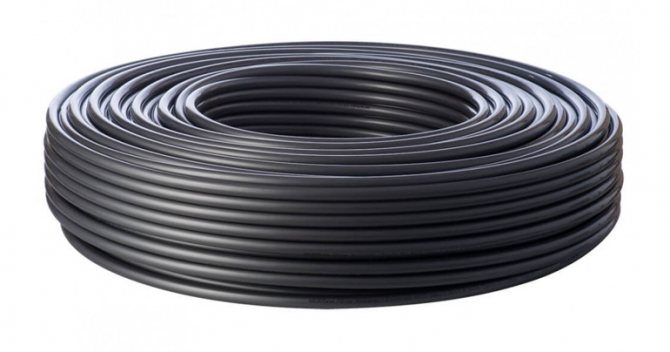

- PEX-B - not less than 65%.
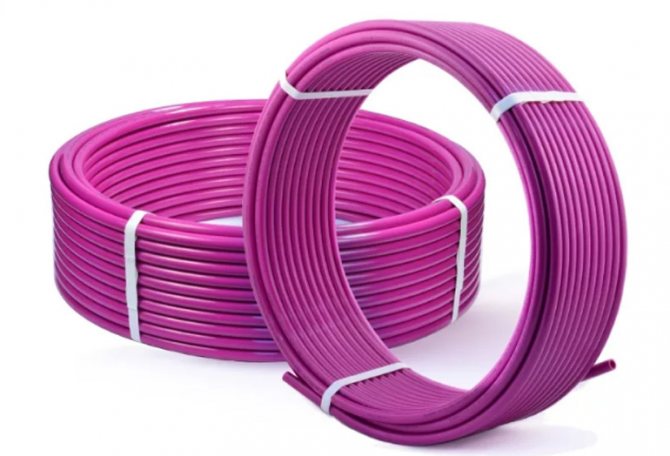

- PEX-C - 60%.
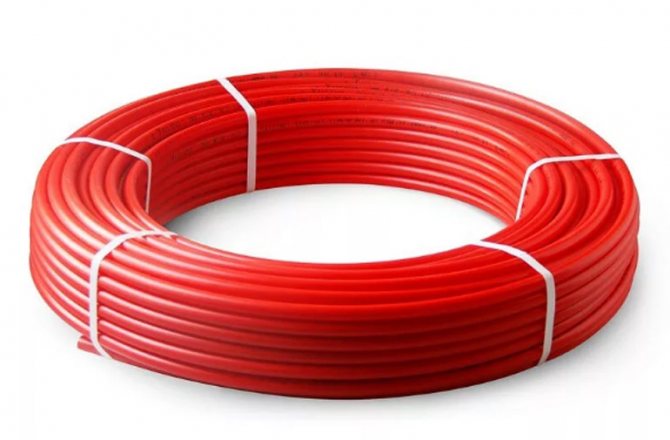

There is also a more recent polyethylene with a higher temperature resistance - PE-RT. The sewing process made it possible to make polyethylene products more heat-resistant (withstand 95 °), improve their elasticity and strength.
However, the stitching method does not really matter. It is much more important to make sure that you have really cross-linked polyethylene in front of you. The letter X just indicates this.There are cases when unscrupulous manufacturers put the PEX marking, but in fact it turns out to be ordinary polyethylene, which cannot be used in warm floors.
Polyethylene pipes are manufactured in different densities from PE32 to PE100. In the contours of the underfloor heating, masters consider it better to use PEX-B polyethylene bends with a density of 100, having an oxygen-protective layer, suitable performance and a lower price.
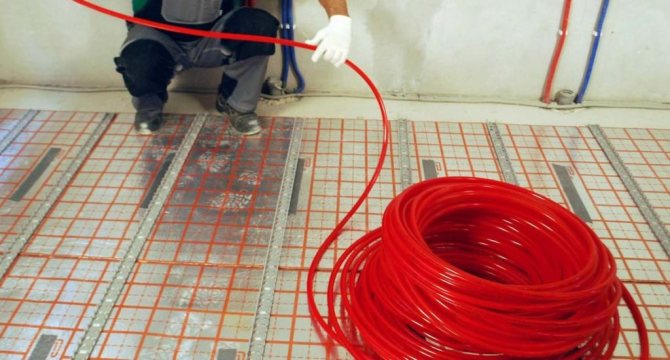

PEX sewn polyethylene, intended for laying in latent heating pipelines, painted in red, is sold in coils.
The metal-plastic pipe has a five-layer structure. It consists of a thin aluminum layer, on which the inner and surface layers of sewn polyethylene are fixed with glue. The metal cylinder gives the metal-reinforced plastic sufficient strength and one hundred percent protection from the ingress of oxygen. The marking looks like PEX-AL-PEX.
Withstands metal-plastic heating up to 95 ° at a pressure of up to 10 bar, and in emergency situations - up to 130 °.
In terms of such indicators as thermal stability, thermal conductivity, thermal expansion, metal-plastic pipes are leading among polymer types.
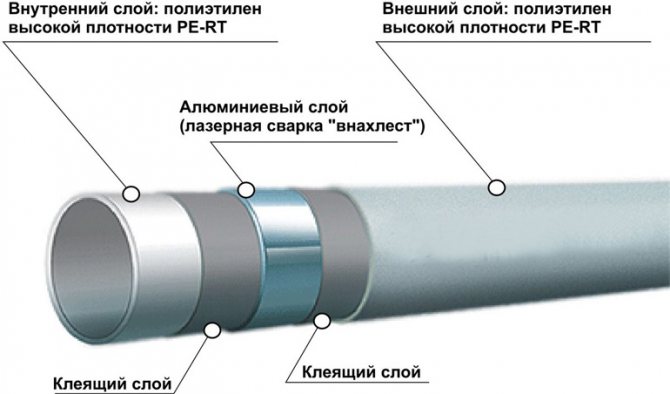

What to choose
The answer to this question depends on the criteria that will be prioritized for the host:
- Based on the technical characteristics, we can conclude that it is better to use metal-plastic products for floor insulation in an apartment building - they are more resistant to operation in harsh conditions of pressure and temperature differences.
- With self-installation, it is also better to pay a little more for metal-plastic, but to make it easier for yourself to install.
- Crosslinked polyethylene will serve faithfully in an individual home. Even if you forget to drain the water and the system freezes, there will be no trouble, the quality of the pipes will not suffer.
- A limited budget with professional skills will also allow you to choose more economical polyethylene.
We recommend that you familiarize yourself with: Rules for the selection and installation of corrugations for wires and cables
Both materials are guaranteed to last at least 50 years, withstand well the average operating parameters of the heating system on the water circuit, and do not critically differ in cost.
Polypropylene pipes, PPR or PPRS
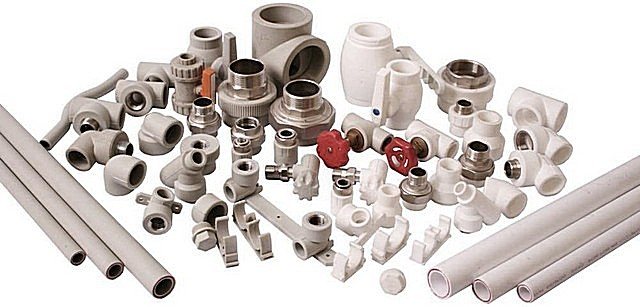

The teams that practice the installation of these particular hoses are popularly called pprshchiki or ironers. The material is considered consumer goods, that is, widespread consumption by the people. The PPR crash test of the branch pipe showed that it explodes at 40-50 bar. By comparison, the metal-plastic one already breaks at 40 bars. So the offensive word "consumer goods" shows why people are so fond of PPR water supply. Cheap and good pipe.
How long will it last?
Under normal conditions, cold water and 2.5 - 4 barr pressure, all materials work the same, with a 50 year warranty. But polypropylene is also used in heating and underfloor heating, and this temperature is already 45 degrees, and if in radiators, then up to 70-90 degrees. Accordingly, the hotter, the shorter the shelf life. In radiators, polypropylene pipes serve for 15-20 years, and even less at high constant pressure.
Installation features
Unpleasant moments: when connecting, a solder is used and many polypropylene manufacturers form nodules at the cut point, nozzles and adapters are not always ideal, therefore additional noise occurs during operation. Although plumbers joke that the sound of water even calms some people.
Cons of PPR:
- It is believed that polypropylene is obsolete, and professional construction companies are not comme il faut to work with polypropylene.
- Large linear expansion. For unreinforced pipes, the coefficient of linear expansion is 0.15 mm / mC, for reinforced pipes - 0.03 mm / mC. This means that during operation in the heating system, the PPR will stretch and sag 5 times more than metal-plastic. Accordingly, apply a load at a different angle to the connecting parts and begin to leak.This is not covered by the warranty and is considered a violation of technical operating conditions. The master's secret may be that they will use short sections or supports under the pipeline, which compensates for linear expansion.
- A bunch of joints. And this is almost the main disadvantage of PPR pipes. After all, most of the joints are hidden. And only because of this, when answering the question which plastic pipe is better, I want to put the PPR in the very last place.
Conclusion: great for ordinary plumbing in a city apartment.
Crimp method
The crimp connection does not require the purchase of separate tools. Use fittings, press collar, and wrench.
A pipe cutter is needed to remove uneven edges. To increase the inner diameter of the pipe, calibration with a countersink is intended. How to make a crimp connection?
- The edges of the pipes must be straight. To do this, measure 2-3 cm from the end of the product, set a mark. A correct chamfer is formed at this mark with a pipe cutter; remove part of the contour.
- The fittings are chosen depending on the size of the contour diameter, but the connecting elements have round rubber inserts-seals. To prevent their deformation, it is necessary to slightly increase the diameter of the pipe. To do this, use a countersink calibration. The tool is inserted inside the contour, rotary movements are performed. Chips are removed from the inner surface. This increases the diameter.
- A crimp ring is put on the pipe.
- Insert the fitting.
- Press the ring onto the fitting. Tighten the crimp nut by hand. In the future, 2 keys are used. One is for holding the fitting, the other for tightening the compression nut.
- Check the assembly of metal-plastic pipes.
We recommend: Features of installation of underfloor heating Sun power
This connection method is used most often. Installation is quick, no expensive equipment is required. The crimp nut securely holds the reinforced plastic circuit.
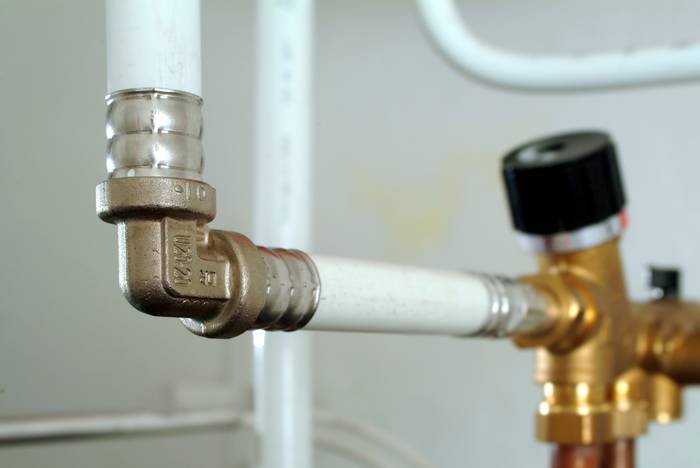

Press crimping with electric crimping machine
In order to connect individual sections of the line using a press crimp, an electric crimper is used. The kit includes nozzles with holes that correspond to a certain diameter of the pipe for "warm floor". Crimping is carried out as follows:
- carry out preparatory work: form a chamfer and increase the diameter of the product using calibration with a countersink;
- install the fitting;
- a pressing ring is put on one end;
- a nozzle is attached to the tool; it is made in the form of forceps; they are disconnected, a pipe is inserted;
- connect the tool to the electrical network;
- connect the tongs; a click will be heard;
- hold them in place for 2-3 seconds;
- disconnect the tongs, check the crimping site.
Installation is fast. The line connects reliably, withstands the high pressure of the coolant, there are no leaks. The disadvantage is the use of expensive equipment. IN
the place of the electric pressurizer can be operated with a hydraulic tool. It costs less, but physical effort is required for crimping.
Press crimping with hydraulic device
The hydraulic pressure tester is a pliers. They are equipped with nozzles for pipes of a certain diameter; they are in the shape of a semicircle; use nozzles in pairs.
The size of the diameter is indicated on the surface of the product. One semicircle is located on the body of the forceps, the other on the head. The nozzle is inserted into the grooves until it clicks.
- Preparatory work is carried out: they form a chamfer and increase the diameter.
- Put on the crimping nut, insert the fitting. The fitting has holes. They determine the correct location of the pipe.
- Place the junction on the body of the forceps, close the head.
- Increase the handles of the crimper. This will increase the stress during crimping. The handles are at an angle of 1800.
- Connect the handles. This will compress the forceps. The fitting and the ring are connected.
- The handles are bred to open the head of the device. To open the head, you need to hit it with your palm.
- Remove the pipe, test the connecting unit.
If there is a rupture of the line, then the space on the floor is freed from the screed, the circuit is opened. The inner and outer walls are washed. Make sure that debris does not get inside the pipeline.
The connection of individual sections of the contour is carried out. It is recommended to close the node with pipe insulation. The material will protect the fittings from oxidative processes. The line is poured with a building mixture for a "warm floor".
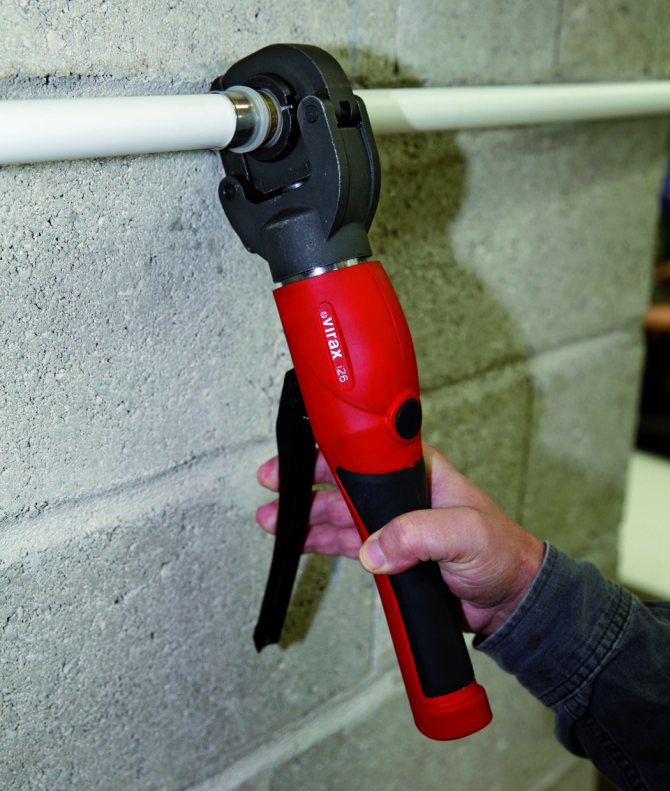

Manual hydraulic press Viar
The joints are installed closer to the border of the water circuit so that they can be easily reached; do not open the entire "warm floor". Fittings are protected with plastic or insulation. The contour diagram is transferred to a sheet of paper in order to further determine where the nodes of the trunk connection are.
We recommend: Characteristics of underfloor heating Nexans
Reinforced-plastic pipes for "warm floors" are a good alternative to polyethylene products. When using the line, you must monitor the heating mode.
Avoid high pressure in the water circuit over 10 bar, liquid temperature over 90 ° C. "Warm floor" is connected to the boiler, to the collector or to the radiator.
YouTube responded with an error: Access Not Configured. YouTube Data API has not been used in project 268921522881 before or it is disabled. Enable it by visiting https://console.developers.google.com/apis/api/youtube.googleapis.com/overview?project=268921522881 then retry. If you enabled this API recently, wait a few minutes for the action to propagate to our systems and retry.
- Similar posts
- How to install a warm floor in the house?
- How to install underfloor heating under a laminate on a wooden floor?
- How to connect a warm floor from the stove?
- What is the layout of the underfloor heating mixing unit?
- What is the difference between Unimat underfloor heating models?
- How are pipes for underfloor heating carried out?

